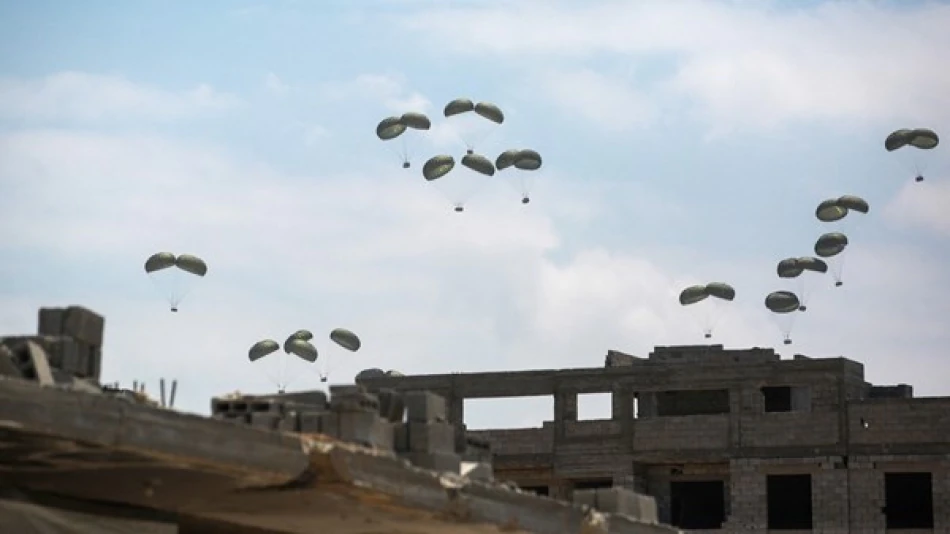
France Airdrops Aid Supplies Over Gaza Amid Escalating Conflict
France Launches Direct Airdrops to Gaza as Humanitarian Crisis Deepens
France has begun conducting direct airdrops of humanitarian aid into Gaza, marking a significant escalation in international relief efforts as the territory faces what global monitors warn is an unfolding famine scenario. The move signals growing frustration among Western allies over restricted access to the besieged Palestinian territory.
Emergency Response to Deteriorating Conditions
On Friday, France initiated the airdrop of 40 tons of humanitarian supplies directly into Gaza, with President Emmanuel Macron emphasizing the "extremely urgent necessity" driving the operation. The French leader took to X (formerly Twitter) to announce the food aid delivery while stressing that aerial drops represent only a temporary solution.
"Airdrops are not sufficient," Macron stated. "Full humanitarian access must be opened to address the threat of famine." This statement reflects mounting international pressure to establish more reliable supply corridors into the territory.
Scale of French Involvement
French Foreign Minister Jean-Noël Barrot revealed that Paris would deploy four aircraft carrying 10 tons of aid each, operating from Jordan. This direct approach represents a departure from previous European Union coordination efforts that relied primarily on land-based distribution through Egypt and Jordan.
Famine Warning Triggers International Action
The decision follows a stark warning from global hunger monitors this week that Gaza is experiencing a famine scenario, with sharp increases in malnutrition and deaths of children under five from hunger-related causes. These conditions have created what aid organizations describe as one of the most severe humanitarian crises in recent memory.
The crisis has been exacerbated by what international observers characterize as severely restrictive policies governing humanitarian aid entry, creating bottlenecks that have prevented adequate supplies from reaching Gaza's 2.3 million residents.
European Coordination Efforts Show Mixed Results
France's direct action comes after months of participation in the European Union's humanitarian air bridge, established in mid-October 2023. According to the Élysée Palace, this coordinated effort has organized more than 60 flights carrying over 3,350 tons of humanitarian supplies, with most shipments entering through Egypt and Jordan.
However, French officials acknowledge that portions of this aid have yet to reach Gaza, highlighting the persistent logistical and political obstacles that have prompted the shift toward direct airdrops.
Strategic Implications for International Relief
The French initiative mirrors similar airdrop operations conducted by the United States, Jordan, and other allies, but represents a notable policy evolution for European nations that have traditionally preferred ground-based humanitarian corridors. This shift suggests growing international consensus that conventional aid delivery mechanisms have proven inadequate.
Precedent for Future Operations
France's move could signal broader changes in how European nations approach humanitarian crises in contested territories. The decision to bypass traditional diplomatic channels for aid distribution reflects the urgency international observers attach to Gaza's deteriorating conditions, potentially establishing precedents for future emergency responses in similar contexts.
The operation also demonstrates how humanitarian imperatives can drive policy adaptations even amid complex geopolitical constraints, as international actors seek alternative methods to fulfill their stated commitments to civilian protection and aid delivery.
Most Viewed News

 Layla Al Mansoori
Layla Al Mansoori






